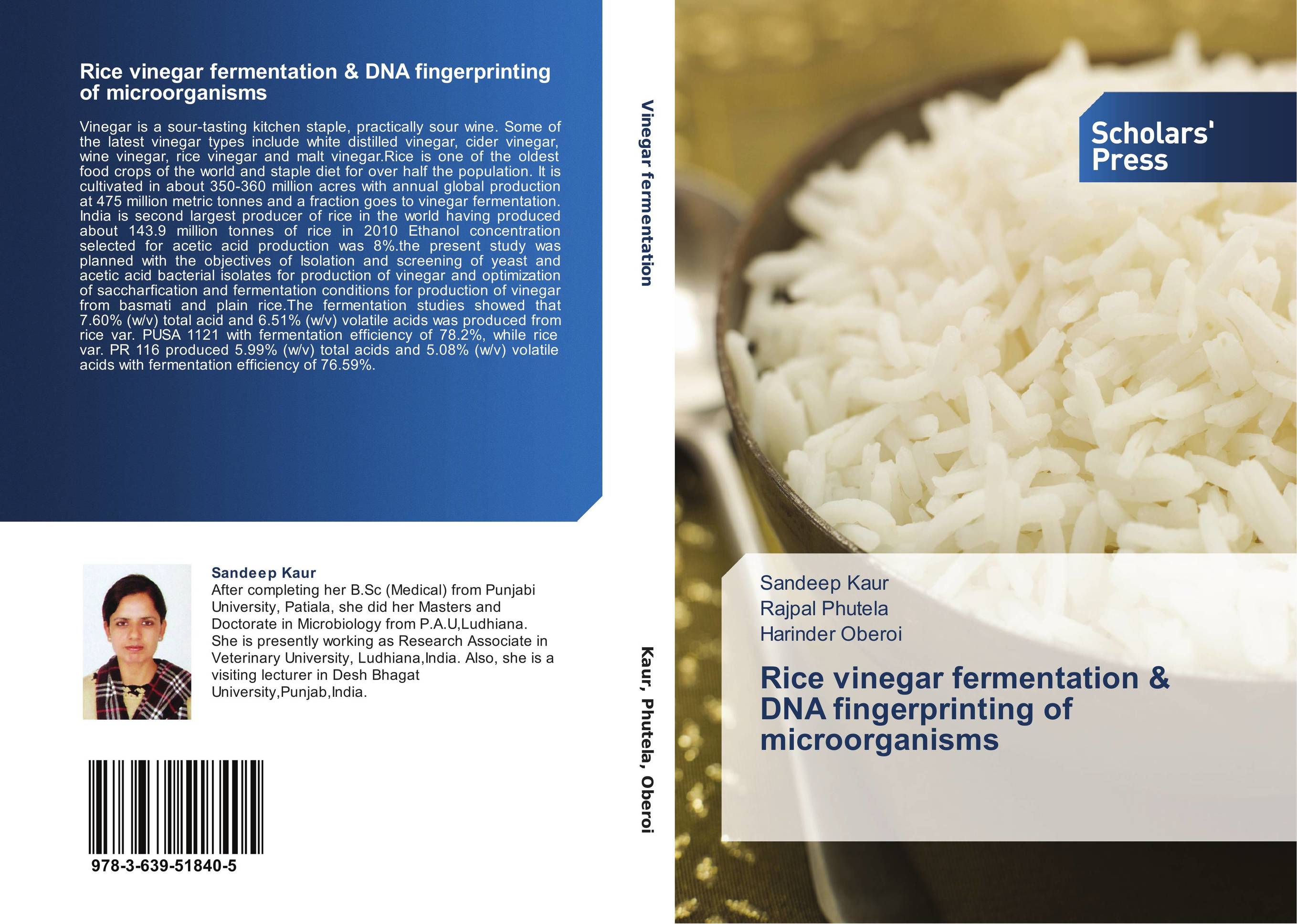| Поиск по каталогу |
|
(строгое соответствие)
|
- Профессиональная
- Научно-популярная
- Художественная
- Публицистика
- Детская
- Искусство
- Хобби, семья, дом
- Спорт
- Путеводители
- Блокноты, тетради, открытки
Rice vinegar fermentation & DNA fingerprinting of microorganisms.

В наличии
| Местонахождение: Алматы | Состояние экземпляра: новый |

Бумажная
версия
версия
Автор: Sandeep Kaur,Rajpal Phutela and Harinder Oberoi
ISBN: 9783639518405
Год издания: 2013
Формат книги: 60×90/16 (145×215 мм)
Количество страниц: 216
Издательство: Scholars' Press
Цена: 52949 тг
Положить в корзину
Позиции в рубрикаторе
Отрасли знаний:Код товара: 128341
| Способы доставки в город Алматы * комплектация (срок до отгрузки) не более 2 рабочих дней |
| Самовывоз из города Алматы (пункты самовывоза партнёра CDEK) |
| Курьерская доставка CDEK из города Москва |
| Доставка Почтой России из города Москва |
Аннотация: Vinegar is a sour-tasting kitchen staple, practically sour wine. Some of the latest vinegar types include white distilled vinegar, cider vinegar, wine vinegar, rice vinegar and malt vinegar.Rice is one of the oldest food crops of the world and staple diet for over half the population. It is cultivated in about 350-360 million acres with annual global production at 475 million metric tonnes and a fraction goes to vinegar fermentation. India is second largest producer of rice in the world having produced about 143.9 million tonnes of rice in 2010 Ethanol concentration selected for acetic acid production was 8%.the present study was planned with the objectives of Isolation and screening of yeast and acetic acid bacterial isolates for production of vinegar and optimization of saccharfication and fermentation conditions for production of vinegar from basmati and plain rice.The fermentation studies showed that 7.60% (w/v) total acid and 6.51% (w/v) volatile acids was produced from rice var. PUSA 1121 with fermentation efficiency of 78.2%, while rice var. PR 116 produced 5.99% (w/v) total acids and 5.08% (w/v) volatile acids with fermentation efficiency of 76.59%.
Ключевые слова: Saccharomyces cerevisiae, Rice Vinegar, Rice Wine, Response Surface Methodology, Acetic Acid Bacteria, Pichia kudriavzeii



